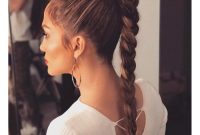Pregnancy brings about a myriad of changes in a woman’s body, including her hair. Hormonal fluctuations can affect hair growth, texture, and overall health. Additionally, many women wonder about the safety of hair dyeing during this special time. This guide delves into the potential risks and benefits of hair dyeing during pregnancy, explores alternative hair coloring methods, and provides tips for maintaining healthy hair throughout pregnancy and beyond.
Whether you’re considering a subtle touch-up or a bold color transformation, it’s essential to understand the potential implications of hair dyeing while pregnant. This guide will equip you with the knowledge you need to make informed decisions about your hair care and ensure the well-being of your growing baby.
Hair Care During Pregnancy

Pregnancy brings about significant hormonal changes that can impact hair growth and texture. Understanding these changes and implementing appropriate hair care practices can help maintain healthy and lustrous locks throughout this journey.
Hormonal Changes and Hair Growth
During pregnancy, increased levels of estrogen and progesterone stimulate hair follicles, leading to thicker, fuller hair. However, after childbirth, these hormone levels drop, causing hair to shed, resulting in postpartum hair loss.
Tips for Healthy Hair During Pregnancy
- Gentle Shampooing: Use sulfate-free shampoos that cleanse without stripping natural oils.
- Deep Conditioning: Regularly use deep conditioners to hydrate and nourish hair, preventing breakage.
- Protective Styling: Avoid tight hairstyles like braids or ponytails that can cause tension and breakage.
- Healthy Diet: Consume a balanced diet rich in protein, vitamins, and minerals essential for healthy hair growth.
- Avoid Heat Styling: Limit the use of heat styling tools like blow dryers and flat irons, as they can damage hair.
Hair Dyeing During Pregnancy

During pregnancy, women may wonder if it is safe to dye their hair. While there is no definitive answer, some research suggests that certain types of hair dyes may pose potential risks to the developing fetus.
Hair dyes contain chemicals that can be absorbed through the scalp and into the bloodstream. Some of these chemicals have been linked to birth defects, developmental problems, and other health issues in animals. However, it is important to note that most of these studies have been conducted on animals, and it is not clear whether the same risks apply to humans.
Types of Hair Dyes
There are two main types of hair dyes: permanent and semi-permanent.
- Permanent hair dyes contain chemicals that penetrate the hair shaft and change its color permanently. These dyes typically contain ammonia, which can be irritating to the scalp and eyes.
- Semi-permanent hair dyes deposit color on the surface of the hair shaft and fade gradually over time. These dyes do not contain ammonia and are generally considered to be less harmful than permanent dyes.
Guidelines for Safe Hair Dyeing Practices
If you are pregnant and considering dyeing your hair, there are some guidelines you can follow to minimize potential risks:
- Choose a semi-permanent hair dye over a permanent hair dye.
- Avoid dyeing your hair during the first trimester of pregnancy, when the fetus is most vulnerable to developmental problems.
- Dye your hair in a well-ventilated area to avoid inhaling harmful fumes.
- Wear gloves to protect your hands from the chemicals in the dye.
- Rinse your hair thoroughly after dyeing to remove any residual chemicals.
Alternative Hair Coloring Methods
While traditional hair dyes may contain harsh chemicals, there are several natural and temporary alternatives that are considered safe for use during pregnancy. These methods offer a way to change your hair color without exposing yourself or your baby to potential risks.
Natural Hair Dyes
Natural hair dyes, such as henna and plant-based dyes, are derived from plants and minerals. They do not contain the same harsh chemicals as traditional dyes, making them a gentler option for pregnant women.
Henna
Henna is a natural dye that has been used for centuries to color hair and skin. It is made from the leaves of the henna plant and produces a rich, reddish-brown color. Henna is relatively easy to apply and can last for several weeks.
Plant-Based Dyes
There are also a number of plant-based dyes available that can be used to color hair during pregnancy. These dyes are made from natural ingredients, such as chamomile, rosemary, and beetroot. They produce a more subtle color change than henna and may need to be applied more frequently.
Temporary Hair Color
Temporary hair color is another option for pregnant women who want to change their hair color without using harsh chemicals. Temporary hair color washes out after a few shampoos and does not penetrate the hair shaft. This makes it a safe and convenient option for pregnant women.
There are a number of different types of temporary hair color available, including sprays, gels, and mousses. These products can be used to create a variety of looks, from subtle highlights to bold, vibrant colors.
Hair Care Considerations Post-Pregnancy

Pregnancy brings about a multitude of changes to a woman’s body, including her hair. After childbirth, it is essential to adopt specific hair care practices to restore its health and address any potential issues.
Postpartum hair changes are primarily attributed to hormonal fluctuations. During pregnancy, increased estrogen levels promote hair growth, leading to thicker and fuller locks. However, after delivery, estrogen levels decline, resulting in increased hair shedding.
Restoring Hair Health Post-Pregnancy
- Gentle Cleansing: Use mild shampoos that are free of harsh chemicals and sulfates to avoid stripping away natural oils.
- Deep Conditioning: Regular deep conditioning treatments help replenish moisture and restore hair’s strength and elasticity.
- Protective Styling: Avoid tight hairstyles, such as braids or ponytails, which can cause breakage. Opt for loose styles that minimize tension on the hair.
- Trims: Regular trims remove split ends, preventing further damage and promoting healthy hair growth.
- Healthy Diet: A balanced diet rich in vitamins and minerals, including biotin, iron, and protein, supports hair health.
Dealing with Hair Loss or Damage
- Patience: Postpartum hair loss is typically temporary and should subside within a few months. Avoid excessive styling or treatments during this period.
- Hair Loss Supplements: Consult with a healthcare professional about hair loss supplements containing biotin, iron, or other essential nutrients.
- Minoxidil: Minoxidil is a topical medication that stimulates hair growth and may be prescribed for postpartum hair loss.
- Protective Products: Use heat protectants when styling to minimize damage. Avoid chemical treatments, such as perms or relaxers.
- Hair Extensions: Consider hair extensions as a temporary solution to conceal thinning or damaged hair.
Closing Summary
Navigating hair care during pregnancy can be a journey of adjustments and considerations. By understanding the potential risks of hair dyeing and exploring alternative coloring methods, you can maintain your desired look while prioritizing the health of both yourself and your baby.
Remember, healthy hair is a reflection of overall well-being, and with the right approach, you can embrace the beauty of your pregnancy while keeping your locks looking vibrant and healthy.
FAQs
Is it safe to dye my hair during the first trimester?
While some research suggests that it’s best to avoid hair dyeing during the first trimester, there is no conclusive evidence to support this claim. However, it’s always advisable to consult with your healthcare provider before using any hair dyeing products during pregnancy.
What are the potential risks of hair dyeing during pregnancy?
Hair dyes contain chemicals that can potentially be absorbed through the scalp and into the bloodstream. Some studies have raised concerns about the potential for these chemicals to cross the placenta and reach the fetus. However, the amount of chemicals absorbed is typically minimal, and there is no definitive evidence to suggest that hair dyeing poses a significant risk to the developing baby.
Are there any hair dyeing products that are safer to use during pregnancy?
Semi-permanent and demi-permanent hair dyes are generally considered safer during pregnancy as they contain lower concentrations of chemicals compared to permanent hair dyes. Natural hair coloring alternatives such as henna and plant-based dyes are also considered safe options.
What are some alternative hair coloring methods that are safe during pregnancy?
Henna, a natural plant-based dye, is a popular alternative to chemical hair dyes. It is considered safe during pregnancy as it does not contain harsh chemicals. Other plant-based dyes such as chamomile, beet juice, and coffee can also be used to add subtle color or highlights to hair.
How can I maintain healthy hair during and after pregnancy?
Maintaining a healthy diet, staying hydrated, and using gentle hair care products are essential for healthy hair during and after pregnancy. Regular trims can help remove split ends and promote healthy hair growth. Additionally, avoiding heat styling tools and excessive brushing can help prevent hair damage.



